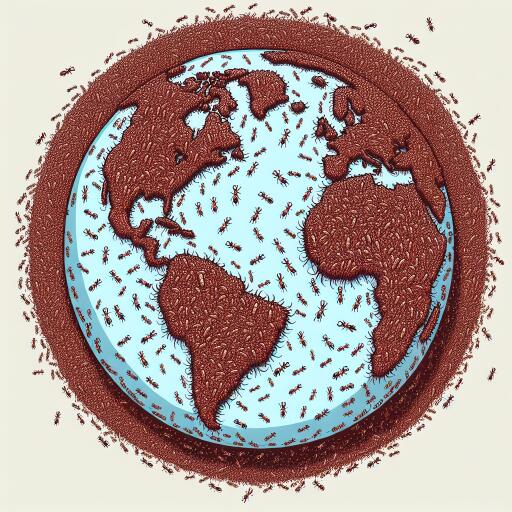
How Many Ants on Earth? – News Directory 3
In a fascinating quest to quantify one of nature’s most ubiquitous creatures, scientists have addressed a question once deemed impossible to tackle: just how many ants inhabit our planet? Leveraging advanced research methodologies and technologies, a groundbreaking estimate has emerged, placing the global ant population at an astonishing 20 quadrillion.
Despite their minuscule stature, ants wield substantial ecological influence, acting as a cornerstone in numerous ecosystems. Biologists have relentlessly pursued the study of these insects to better comprehend their distribution and abundance, hoping to uncover their profound impact on our environment.
The endeavor was led by researchers from Julius-Maximilians-Universität Würzburg, who embarked on a comprehensive study focusing on the ecological roles, distribution, and sheer numbers of ants worldwide.
Forming intricate colonies, ants exhibit complex social structures and collective behavior that can be likened to “swarm intelligence.” Much like neurons in a brain contribute to thoughts and actions, ants operate collaboratively without requiring a centralized leader to guide them.
The analysis drew from 489 studies, covering ground-dwelling and tree-dwelling ants from various global locales, yielding surprising insights. Estimates suggest that the total global population of ants is around 20 quadrillion—a figure that is 20 followed by 15 zeros.
Equally remarkable is their collective mass. Research indicates that the biomass of all ants surpasses that of all birds and wild mammals combined, accounting for about a fifth of the total human biomass.
Ants thrive predominantly in tropical and subtropical regions. They commonly nest in the leaf litter on forest floors, while in arid areas, they are active on open surfaces. These behaviors offer ecologists valuable clues on how factors like climate, precipitation, and vegetation influence ant populations.
The ecological contributions of ants are vast. They are integral in soil turnover, moving up to 13 tons of soil per hectare yearly. Ants also play a pivotal role in seed dispersal, organic matter recycling, and enhancing soil fertility, all of which contribute to forest regeneration.
However, not all ant impacts are beneficial. Certain invasive species, such as fire ants, pose threats to local ecosystems by displacing native species and altering the natural balance.
Although ants are frequently regarded as nuisances, they hold significant places in the food chain, ecosystem structure, and biodiversity conservation. Ant colonies construct pathways that benefit other creatures, cultivate fungi and aphids, and demonstrate collaborative cognitive abilities that in specific contexts may even surpass those of humans.
The sheer scale of the ant population and their roles in ecosystems underscore the complexity and interdependence of natural systems, a reminder of the intricate dance of life on Earth.





Leave a Reply